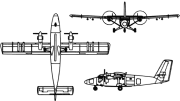|
They tested those capsules using live bears that were drugged. The bears lived but had some injuries too. Then they were euthanized and autopsied to see what effects it had. Sucks for the bears. 
|
|
|
|

|
| # ? May 28, 2024 15:01 |
|
Why bears?
|
|
|
|
Why not?
|
|
|
|
Sharks kept slipping out of the straps
|
|
|
|
The bears were actually left over from another DOD program, "Assessment of reports of Ursus arctos fecal production within forested area of the Northwestern United States". (That program was cancelled after 10 years and 5 billion dollars, as it failed to show any conclusive results.)
|
|
|
|
Bears are apparently pretty physiologically similar to people. Maybe they fling poo less than apes?
|
|
|
|
FrozenVent posted:The bears were actually left over from another DOD program, "Assessment of reports of Ursus arctos fecal production within forested area of the Northwestern United States". (That program was cancelled after 10 years and 5 billion dollars, as it failed to show any conclusive results.) Took me a couple of seconds, good one. 
|
|
|
|
Those capsules were stupid and the suits designed for the SR-71 were a much more elegant solution.Dark Helmut posted:This brings up something I've always wondered and has ZERO to do with the Cold War. When you jump out of a plane such as this, how do you keep from hitting the wing and/or stab? Would gravity take you down below wing-level before you got brained at high speed or do you jump up and over the wing? evil_bunnY fucked around with this message at 21:23 on May 27, 2014 |
|
|
|
http://thediplomat.com/2014/01/chinas-deceptively-weak-and-dangerous-military/ The above article was referenced in a brief debate in The D&D maps thread. Since we're all map nerds there and don't like non-map related derails, Koramei told me to bring it up here for further discussion. Now, I don't ultimately disagree with the overall point of the article, but some of it is.. well, bullshit. The main points: 1) Horses quote:Also that article dismisses the Chinese military because they use horses to patrol areas in the interior, just like the American military did in Afghanistan. quote:It's very difficult to identify tracks from 500 feet in the air, and horses aren't as susceptible to weather conditions as helicopters. Also in a vast area with low infrastructure (where nuclear missile bases tend to be situated) it's difficult to transport the large quantities of fuel, oil and spare parts that a helicopter fleet requires. Furthermore it's quite easy to train a soldier how to look after their horse; but training a helicopter crew in the intricacies of helicopter maintenance and repair is much more difficult. So you need more men, more food, more water, more accommodation, more transport, more medicine, more doctors, more entertainment... etc etc etc. 2) Submarines The author says the PLAN has never undertaken a submarine "operational patrol". They have certainly conducted patrols capable of carrying missiles; but does "operational patrol" mean "deterrent patrol"? If so, he's right, but I don't know what an operational patrol actually is. 3) Stress levels in PLA soldiers. quote:He says a PLA unit were so "stressed out" by a simulation exercise that they had to have karaoke machines etc delivered to them. His implication is that they were badly trained and weak and had essentially failed to function as a team and a fighting force. I got this from page 14 of his source. I may be interpreting it in a biased way, of course... 4) Chinas aircraft carrier quote:The article also says that Chinas aircraft carrier, the Liaoning, broke down after being launched in 2012. It actually completed a 37 day voyage which was hardly surprising considering it had managed a 4 day voyage the year before. The source doesn't even say it broke down. Did it break down? You guys will know more about this than me... 5) The PLA are training for amphibious landings on beaches that are nothing like in Taiwan or anywhere else in the region. quote:His source is this: To my admittedly untrained eye those beaches look pretty similar. Is there a military reason why they aren't? If anyone has any input to the article or the points raised I'd be happy to hear them. I don't know much about this, the article just sounds like it's clutching at straws.
|
|
|
|
I would guess the most important considerations for an amphibious assault would be how far the tide varies, and how steep the drop-off is, so you can get your heavier ships with a deeper draft in closer to the shore. Also how solid the stuff below the beach is (mud, coral, stone) so you can start building temporary harbor stuff for some real logistics. EDIT: So the picture is kinda useless without a topo map of the surf zone and some tide charts.
|
|
|
|
FrozenVent posted:The bears were actually left over from another DOD program, "Assessment of reports of Ursus arctos fecal production within forested area of the Northwestern United States". (That program was cancelled after 10 years and 5 billion dollars, as it failed to show any conclusive results.) You. I like you.
|
|
|
|
duckmaster posted:4) Chinas aircraft carrier I don't know anything about the Liaoning that cannot be learned from reading its Wikipedia page, but problems with what is effectively a first-of-class aircraft carrier aren't really surprising. Keep in mind that the Chinese had no prior experience with such vessels, and they had to rebuild pretty much everything except the hull. Compare that with the hilarious story of the French carrier CDG (Wikipedia doesn't list all of its problems; my favorite is the windows: the French Navy sent to the glassmakers specs calling for extreme resistance and durability, and obtained window panes that fit the specs but were effectively pretty much opaque. They had to resend specs with a requirement for transparency in it.) Even the USA, with their unequaled experience in carrier building, are running into troubles with the Gerald Ford class and its new CATOBAR system not yet performing as reliably as old fashioned steam and hydraulics.
|
|
|
|
duckmaster posted:*snip* It's not a very good article; there are a ton of misstatements, odd interpretations, exaggerations, etc. You could go through and pick all of them out, but if you look at the board of the Project 2049 Institute, where the author is employed, you should be able to figure out the definite ideological intent driving it.
|
|
|
|
Nebakenezzer posted:I can see an upside to sea-dart type fighters you are talking about - no giant vunerable carrier to base them off of - but for reasons other here have explained, the USA wouldn't be interested in them. Good point about the compromises of VTOL though; Mr. Chips was doing a series of infodumps on the history of VTOL aircraft, and my conclusion thus far is "way more trouble than it is worth." Has it been that long since my last post that it's now "was" instead of "is"?  I really do need to get that stuff back on track...we haven't even seen the best (read: most hilarious) part of the VTOL story yet, nor some of the other neat stories I have planned.
|
|
|
|
PCjr sidecar posted:It's not a very good article; there are a ton of misstatements, odd interpretations, exaggerations, etc. You could go through and pick all of them out, but if you look at the board of the Project 2049 Institute, where the author is employed, you should be able to figure out the definite ideological intent driving it. Looking at the board, most of the members tend towards the American right-wing, but that doesn't seem to fit the article's tone. It fits right-wing interests in the US to portray a strong, potentially overpowering Chinese military that can only be countered by a strong, well funded American military, but the article argues that the Chinese military is not anywhere near as powerful as the Chinese claim it is, a sentiment I agree with, at least insofar as comparing it to the US military goes (the discussion was sparked by someone asserting that the PLAN will rival the US Navy in 15 years.)
|
|
|
|
Breaky posted:Why did the Jaguar do that anyway? food-rf posted:Saves underwing pylon space for bombs and tanks. PhotoKirk posted:Martin used the rotating bomb bay door on the P6M.
|
|
|
|
The Chinese submarines are pretty lovely, but just because they're lovely today doesn't mean they'll be lovely forever, or even necessarily for very long. Their missile sub is babby's first boomer but they're treating it as an R&D platform and have made leaps and bounds with engineering and operational experience (espionage probably helped.) Also their missile sub is probably the least concerning thing they have in the water, if you want to talk Chinese submarine threats you should be far more worried about their nuclear and diesel attack boats (that are also pretty much poo poo, but also getting better quickly.) Liaoning is also an R&D / experience builder. Keep in mind that it's a bad boat from the start because the Russians built crap carriers, not because the Chinese designed it that way. Their second bigdeck is going to be very different. Like subs, the Chinese recognize they're decades behind the countries they want to be peers with when it comes to naval aviation expertise, and they're in a hurry to catch up, and will flog a crappy hull while they learn to build better ones if that's what it takes. A somewhat better analysis of Chinese buildup is here: http://www.nytimes.com/2014/05/25/world/asia/chinas-leader-seeking-to-build-its-muscle-pushes-overhaul-of-the-military.html?_r=0 Keep in mind that numbers on Chinese GDP or any government spending should be taken with big grains of salt. The Ford's electromagnetic catapult problems are bigger than they sound, as future carrier requirements have cooked in the assumption that Ford-class carriers can sortie aircraft almost twice as fast (and thus can support far more sorties per day) as their Nimitz predecessors. Right now it can't come close to a steam-catapault deck's performance, but even if it reaches parity or slightly beats it, that's still far less flights per day than planners were counting on, which could mean needing two decks instead of one for certain tasks, or just not being able to do those tasks.
|
|
|
|
Since we mentioned Chinese subs, I'll mention that the Chinese are also trying to build their equivalent of a SOSUS net in the South China Sea and I'm desperately plugging the idea that westerners should refer to it as TSOSUS
|
|
|
|
General TSOSUS' Chicken.
|
|
|
|
That is the joke, yes
|
|
|
|
Snowdens Secret posted:The Chinese submarines are pretty lovely, but just because they're lovely today doesn't mean they'll be lovely forever, or even necessarily for very long. Their missile sub is babby's first boomer but they're treating it as an R&D platform and have made leaps and bounds with engineering and operational experience (espionage probably helped.) Also their missile sub is probably the least concerning thing they have in the water, if you want to talk Chinese submarine threats you should be far more worried about their nuclear and diesel attack boats (that are also pretty much poo poo, but also getting better quickly.) The problem with "Chinese parity with the US in 20 years" narrative, aside from the fact that it's a linear line of thought that assumes infinite Chinese growth and that the status quo will always favor China, is that the US isn't sitting still either and my impression is that it maintains a pretty strong technological advantage, particularly in engines, metallurgy, computers, and robotics. The US is still building carriers (with some bumps in the road as you pointed out), still producing aircraft, and still building on top of it. Basically, where do we see the US military in 20 years should be just as important a question as where we see the Chinese military in 20 years.
|
|
|
|
Dead Reckoning posted:It's also a setup that only works with small, fast missiles like the Sidewinder. Whatever you put on there has to clear the rail without falling onto the wing. With respect to our theoretical seaplane fighter, this means the overwing stores do not contribute to ground attack capability. It also fucks with your RCS, and it's a significant engineering challenge to carry weapons inside the wings. The other option is a Rube Goldberg "missiles on fuselage" setup where you're shooting missiles past or over the canopy. Ground attack capability from overwing pylons? As with everything else in life, the solution is simple: more rockets.  (yes, I'm aware of all the issues here, the limited capability, and so forth. I don't care, because rockets)
|
|
|
|
We interrupt this discussion to bring you; the batplane! http://imgur.com/M0eL6bu
|
|
|
|
duckmaster posted:1) Horses It is relatively primitive, but you can't necessarily say "lol horses" and leave it at that. China has lots of people and lots of land, and lots of...horses, probably. Fewer trucks, helicopters, and planes. Sounds to me like they're using their assets effectively. quote:2) Submarines Everything open-source I'm aware of thinks that Chinese submarines are decades behind USN subs and ASW platforms, which means more or less that they'd be easy meat in blue water without additional help. However, I don't think that the PLAN has any intention of sending them out to hunt in waters that the USN controls. Instead, they want to deny sea control to the USN through platforms like the DF-21 and their horde of ASCMs, then send the subs out to operate in that umbrella. quote:3) Stress levels in PLA soldiers. This is profoundly unscientific and should probably be ignored. Imagine a similar analysis of American soldiers yields a lot of cheap beer and Xbox. quote:4) Chinas aircraft carrier It will be a long, long time, if ever, before China could approach US/NATO control in blue water. Like with the subs, however, that probably isn't really their objective. What they want is a carrier that can project some power regionally and can operate effectively close to their shores, not a giant floating China that can go park in San Francisco Bay and cow America into signing the latest trade agreement. quote:5) The PLA are training for amphibious landings on beaches that are nothing like in Taiwan or anywhere else in the region. Contested landings aren't all that difficult in the grand scheme of things. China has a high end space program and the world's best ballistic missile force, they can certainly conduct amphibious operations effectively if they want to. That being said, this doesn't really imply that they have a serious ability to conduct major operations away from their own shores; the hard parts about that are sustainment and protection, not getting there and taking the territory initially.
|
|
|
|
bewbies posted:Contested landings aren't all that difficult in the grand scheme of things. China has a high end space program and the world's best ballistic missile force, they can certainly conduct amphibious operations effectively if they want to. That being said, this doesn't really imply that they have a serious ability to conduct major operations away from their own shores; the hard parts about that are sustainment and protection, not getting there and taking the territory initially. Even if we go lol Minuteman and discount the air force, the navy seems to be running the boomers competently
|
|
|
|
Fojar38 posted:The problem with "Chinese parity with the US in 20 years" narrative, aside from the fact that it's a linear line of thought that assumes infinite Chinese growth and that the status quo will always favor China, is that the US isn't sitting still either and my impression is that it maintains a pretty strong technological advantage, particularly in engines, metallurgy, computers, and robotics. The US is still building carriers (with some bumps in the road as you pointed out), still producing aircraft, and still building on top of it. For somewhat obvious reasons (including espionage) it is easier to catch up technologically when behind than it is to pull away when you're ahead. China's economic growth (unsustainable and/or fictitious it may be) means that their economy has roughly reached and will soon surpass US levels in terms of purchasing power. Their military spending continues to rise (for several reasons including driving R&D and stimulating key industries) while ours continues to face downward pressure; it's not unrealistic to think in 20 years their effective spending could match or exceed ours. We are not spending now at a level to maintain the force we have, not by a long shot, meaning even without further cuts from status quo budget we will see continuous reduction in capability; this is very prominent on the Navy side. (If you don't already know, I am much more pessimistic on budget capability in the middle term than most SA posters.) China's naval interests at this point are fairly limited to the Pacific fairly near their coast (ok, as far out as Japan) and sea lanes from there to East Africa. Whether they will make a deal for Atlantic access via other African bases, negotiating a deal for Lajes Field, etc remains to be seen, but at least until then it allows them to focus their naval attention in a fairly small area. It should be noted that they are extremely weak in terms of the logistics necessary for long-distance force projection, but one of their hot projects is an AOE intended to address this. The US on the other hand obviously has two coasts, two oceans and a much wider spread of concerns (and allies that are frustratingly underinvolved in maintaining sea lanes.) On a similar vein, you mentioned planes, the F-22 is hot poo poo and I doubt the Chinese will have a match for it in the next two decades, but we barely built any and it would be difficult / impossible to focus all those airframes on a China-involving conflict. On the other hand that theoretical conflict would likely be in their back yard, and tech parity or not they're likely to have considerable numbers advantage. The F-22 theoretically renders numbers advantages moot in air-air matchups, but you've still got to go through and shoot down the other planes before they (or long-range missiles) pulverize your relevant airbases. The F-35 has similar pros/cons/issues. We would have a much higher ratio of aircraft operating off of ships than they would, and if you knock out a ground base it's much quicker and easier to get it going again than if you knock out a CVN. All in all it's fun phallus-waggling to think of, but they don't have to come close to parity, they just need to be enough of a hassle to convince us that whatever island war / treaty obligation they trigger isn't worth the cost of dealing with, which is a much lower threshold.
|
|
|
|
FrozenVent posted:Oh hey someone got mixed up between AutoCAD and KSP. The new HondaJet does the same thing: 
|
|
|
|
Epiphyte posted:its not like China has been launching off a bunch of Theatre ballistic missiles Yes, it is. If your sole measure of a good ballistic missile force is the ability to put nuclear missiles on all reaches of the earth at alarming rates, China probably isn't it. But if flexibility counts for even an ounce of weight, it's certainly not the USA. mlmp08 fucked around with this message at 01:40 on May 28, 2014 |
|
|
|
mlmp08 posted:Yes, it is. I mean, the DF-21 might be a game changer but I'm not sure it qualifies China as the "best" But who the gently caress knows, I feel like most of the Chinese military analysis I read is Team B bullshit repurposed for the modern day.
|
|
|
|
mlmp08 posted:Yes, it is. This. The US might have the most sheer destructive power available in a ballistic missile fleet but it certainly isn't the most operationally useful. Even with our advantages in science and engineering we're years behind the PRC when it comes to BMs, as is everyone else other that Russia.
|
|
|
|
Snowdens Secret posted:China's economic growth (unsustainable and/or fictitious it may be) means that their economy has roughly reached and will soon surpass US levels in terms of purchasing power. Their military spending continues to rise (for several reasons including driving R&D and stimulating key industries) while ours continues to face downward pressure; it's not unrealistic to think in 20 years their effective spending could match or exceed ours. We are not spending now at a level to maintain the force we have, not by a long shot, meaning even without further cuts from status quo budget we will see continuous reduction in capability; this is very prominent on the Navy side. (If you don't already know, I am much more pessimistic on budget capability in the middle term than most SA posters.) I'm not so sure about this. Their military spending is rising but it's still only a fraction of what the US spends, and by its nature as a socialist state China is extremely expensive to govern already. Also bear in mind that even with its lightning fast growth (which is starting to slow) the Chinese economy is still only half the size of the US economy, and and most countries and financial institutions don't trust the value of the Renminbi because the Chinese government is constantly tampering with its value, making the actual PPP of the Chinese difficult to assess and hindering China's ability to continue to attract capital and investment once their growth slows to match other industrialized economies. You pointed out that Chinese economic growth might be unsustainable or fictitious, but didn't seem to pay it much heed when it in fact matters quite a bit. Regarding the US, I don't see the US cutting military spending that dramatically, as it's ridiculously difficult to do politically, particularly now that the Tea Party (who seemed to be the only ones interested in military cuts because they are crazy and hypocritical) seems to be fizzling out and the Republican old guard is reasserting itself. In fact, if China does become sufficiently strong as to actually threaten American military power it seems to me like that would put huge amounts of political pressure on Washington to spend more on defense. If it looks as bad as you're saying it they might even return to Cold War military spending, and as far as the Chinese are concerned they seem to understand that getting into an arms race with the US is a really bad idea. quote:China's naval interests at this point are fairly limited to the Pacific fairly near their coast (ok, as far out as Japan) and sea lanes from there to East Africa. Whether they will make a deal for Atlantic access via other African bases, negotiating a deal for Lajes Field, etc remains to be seen, but at least until then it allows them to focus their naval attention in a fairly small area. It should be noted that they are extremely weak in terms of the logistics necessary for long-distance force projection, but one of their hot projects is an AOE intended to address this. The US on the other hand obviously has two coasts, two oceans and a much wider spread of concerns (and allies that are frustratingly underinvolved in maintaining sea lanes.) Everyone would flip their poo poo including Europe if the Chinese began making moves into the Atlantic and you would almost certainly see the US twisting Portugal's balls until they turned blue in order to stop a potential Chinese base in the Azores. Projection into the Indian Ocean is more likely, but remember that none of China's neighbours likes China, and most would be disinclined to provide a base. While bases on the east coast of Africa are a possibility, only a handful (Kenya, Tanzania, Mozambique, Madagascar) are geographically and politically suitable for a Chinese base, and those aren't the best locations to project power from. I suppose they could project into the Atlantic from there, but again that would cause the West to flip its poo poo and begin manhandling anyone who provided China with a base. Lots of the "China is rising" narrative necessarily carries an implicit "The West is declining" narrative as well, and I just don't see the West as in decline. quote:On a similar vein, you mentioned planes, the F-22 is hot poo poo and I doubt the Chinese will have a match for it in the next two decades, but we barely built any and it would be difficult / impossible to focus all those airframes on a China-involving conflict. On the other hand that theoretical conflict would likely be in their back yard, and tech parity or not they're likely to have considerable numbers advantage. The F-22 theoretically renders numbers advantages moot in air-air matchups, but you've still got to go through and shoot down the other planes before they (or long-range missiles) pulverize your relevant airbases. The F-35 has similar pros/cons/issues. We would have a much higher ratio of aircraft operating off of ships than they would, and if you knock out a ground base it's much quicker and easier to get it going again than if you knock out a CVN. The problem is that Chinese missile attacks against US carriers or bases would be considered an attack on US soil and would merit such a response, and the US maintains the ability to launch so many missiles that they actually end up running out of targets. Yes, land-based bases are easier to repair, but they also can't move and can therefore be pounded with missile with impunity. quote:All in all it's fun phallus-waggling to think of, but they don't have to come close to parity, they just need to be enough of a hassle to convince us that whatever island war / treaty obligation they trigger isn't worth the cost of dealing with, which is a much lower threshold. Maybe, although they wouldn't have any way of knowing if they aren't worth the cost of dealing with until they actually make a move, which is a game of chicken that I can't see the Chinese playing as it doesn't fit their cautious approach to governance, especially since the US response is pretty unpredictable. bewbies posted:The US might have the most sheer destructive power available in a ballistic missile fleet but it certainly isn't the most operationally useful. Even with our advantages in science and engineering we're years behind the PRC when it comes to BMs, as is everyone else other that Russia. Didn't the opening salvo of the Iraq War prove that American missiles are a force to be reckoned with? We haven't actually seen any of China's missiles in action and considering the fact that they're closely guarded secrets it's possible that the Chinese are BSing regarding their capabilities. Fojar38 fucked around with this message at 02:19 on May 28, 2014 |
|
|
|
Fojar38 posted:Looking at the board, most of the members tend towards the American right-wing, but that doesn't seem to fit the article's tone. It fits right-wing interests in the US to portray a strong, potentially overpowering Chinese military that can only be countered by a strong, well funded American military, but the article argues that the Chinese military is not anywhere near as powerful as the Chinese claim it is, a sentiment I agree with, at least insofar as comparing it to the US military goes (the discussion was sparked by someone asserting that the PLAN will rival the US Navy in 15 years.) The more interesting member of the board is the representative of the US-Taiwan Business Council; if you look at their other publications or their International Advisory Council they're focused on Taiwanese interests. There's this delicate balance between "lol Communism" and "asymmetric warfare", that an invasion of Taiwan is likely to fail so the US should keep selling arms and training the Taiwanese military. Personally, my (completely uninformed) opinion is that 15 years is a long time in geopolitical terms but a relatively short time in military equipment development, procurement, and production that makes it very unlikely to put the PLAN anywhere near USN in that time frame, but that article's "so many missiles and drones and cyber" are the same cold war warhead-counting that led to a '600 ship Navy.'
|
|
|
|
Snowdens Secret posted:For somewhat obvious reasons (including espionage) it is easier to catch up technologically when behind than it is to pull away when you're ahead. Maybe their economy is growing, but they have a ton of future outlays that aren't being met right now that will impact military budget growth. China has 4 times the population of the US so even when they hit GDP parity they'll still be 4 times as poor. The Chinese social safety net is virtually nonexistent, which makes up most of US non-defense spending. As the population becomes more urbanized and more educated it's going to become more apparent to them that social services are woefully lacking in comparison to other countries, and as China becomes richer it's going to be harder and harder for the party-state to justify not providing meaningful social services. There's a demographic crisis on the horizon and the current model of forcing children to take care of parents isn't going to work when every adult male has four retired people to support. So I think China will also be facing budget pressure in the future. The PLA budget can't keep growing forever because for all China's rise they still have not implemented a lot of expensive parts of being a modern state.
|
|
|
|
Snowdens Secret posted:Also their missile sub is probably the least concerning thing they have in the water, if you want to talk Chinese submarine threats you should be far more worried about their nuclear and diesel attack boats (that are also pretty much poo poo, but also getting better quickly.) And it only takes one. Or more accurately, it only takes a credible threat against our laughable ASW capabilities to start to impact the geo-political environment in the region by affecting the deployment of US forces. Snowdens Secret posted:Liaoning is also an R&D / experience builder. Keep in mind that it's a bad boat from the start because the Russians built crap carriers, not because the Chinese designed it that way. Their second bigdeck is going to be very different. Like subs, the Chinese recognize they're decades behind the countries they want to be peers with when it comes to naval aviation expertise, and they're in a hurry to catch up, and will flog a crappy hull while they learn to build better ones if that's what it takes. It's basically the Chinese version of the Langley, except instead of modifying a collier they bought a hulk from the Russians. Also worth mentioning that even if it is a crappy carrier it is the only fixed wing carrier in East/Southeast Asia. That's useful as a dick waving tool. It really can accomplish its two main goals (developing a core cadre of carrier expertise and regional dick waving) without venturing beyond the First Island Chain. Snowdens Secret posted:On a similar vein, you mentioned planes, the F-22 is hot poo poo and I doubt the Chinese will have a match for it in the next two decades, but we barely built any and it would be difficult / impossible to focus all those airframes on a China-involving conflict. On the other hand that theoretical conflict would likely be in their back yard, and tech parity or not they're likely to have considerable numbers advantage. The F-22 theoretically renders numbers advantages moot in air-air matchups, but you've still got to go through and shoot down the other planes before they (or long-range missiles) pulverize your relevant airbases. The F-35 has similar pros/cons/issues. We would have a much higher ratio of aircraft operating off of ships than they would, and if you knock out a ground base it's much quicker and easier to get it going again than if you knock out a CVN. For all the arguable oversights and points of contention contained in those RAND studies a few years back, it's hard to dispute the ultimate conclusion: there aren't enough planes carrying enough missiles. Even if you assume a generous Pk, backstopping with F-15Cs/the Navy/whoever, and invincibility cheat codes on, 187 Raptors (and fewer than that combat coded) combined with turn times and the tyranny of distance means that you eventually run out of missiles, leakers get through, your enablers like AWACS and tankers get shot down, and you've lost the air war. bewbies posted:the hard parts about that are sustainment and protection, not getting there and taking the territory initially. In other words: https://www.youtube.com/watch?v=VCh6HnXHKRc Epiphyte posted:I was thinking combat use when I made that statement, but I was not aware they'd been so active in testing Learn you something. China has the ability to turn every Taiwanese military base into a smoking hole in the ground many times over using nothing but their conventional TBMs. bewbies posted:This. The INF Treaty meant that Russia largely stopped focusing on TBMs. I'd agree that if we're talking ICBMs the Russians are far and away ahead of everyone with the Chinese number two behind them, but I'd argue that if we're talking TBMs the Chinese are easily the foremost in the world. e: Fojar38 posted:The problem is that Chinese missile attacks against US carriers or bases would be considered an attack on US soil and would merit such a response, and the US maintains the ability to launch so many missiles that they actually end up running out of targets. Yes, land-based bases are easier to repair, but they also can't move and can therefore be pounded with missile with impunity. We would run out of missiles (of all kinds) waaaaaaaay before we ran out of targets in any China scenario (Taiwan Strait, SCS, or otherwise). I'm not talking about strategic stockpiles here (that's a different discussion), I'm talking about tactically...throughput on fighters, VLS on Aegis destroyers/cruisers, etc. Fojar38 posted:Didn't the opening salvo of the Iraq War prove that American missiles are a force to be reckoned with? We haven't actually seen any of China's missiles in action and considering the fact that they're closely guarded secrets it's possible that the Chinese are BSing regarding their capabilities. What (ballistic) missiles? Cruise missiles != ballistic missiles, you're talking about completely different capabilities. (We have no ballistic missiles other than nuke tipped ICBMs). And even then our cruise missiles are pretty middling, other than TacTom and JASSM I guess. As for them BSing...I wouldn't bet the farm on that one. iyaayas01 fucked around with this message at 02:33 on May 28, 2014 |
|
|
|
Fojar38 posted:Didn't the opening salvo of the Iraq War prove that American missiles are a force to be reckoned with? bewbies posted:ballistic missile fleet ... BMs Opening salvos of Iraq I and II were cruise, not ballistic.
|
|
|
|
iyaayas01 posted:
http://en.wikipedia.org/wiki/MGM-140_ATACMS 
|
|
|
|
poo poo, anything we can sell abroad without running afoul of the MTCR barely counts. Point taken though.
|
|
|
|
The Chinese can use conventional-armed big ballistic missiles for all sorts of mischief specifically because they don't have much of a nuclear ICBM deterrent so (theoretically) them lighting off a mess of candles doesn't cause everyone else to go full WOPR like would happen if the Rus or US tried the same thing. RE: missiles, it's worth noting that the Tomahawk is old and slow and questionably useful against an alerted near-peer; an Iraq-style attack against Chinese assets would get swatted away impotently without a lot of prior softening up with higher-spec assets. We've also stopped buying new ones once old ones are used up, and of the ones we have, only a small portion are going to be in the West Pacific in any realistic brinkmanship scenario no matter how pivoted we are. At least in the UNCLASS realm we have dick and squat for a modern / stealth / high-speed SSM replacement. I have no idea what SLAM-ER and other air-launched numbers are like, but you've still got to have the airframes to carry them. And again in a near-peer conflict we're at a handicap holding back our best nuclear-capable assets (B-2s right now) both to avoid telegraphing too much threat and to make sure they're intact in reserve if it does get to fry-time.
|
|
|
|
iyaayas01 posted:We would run out of missiles (of all kinds) waaaaaaaay before we ran out of targets in any China scenario (Taiwan Strait, SCS, or otherwise). I'm not talking about strategic stockpiles here (that's a different discussion), I'm talking about tactically...throughput on fighters, VLS on Aegis destroyers/cruisers, etc. Lets say the PLAAF has around 1300 total combat aircraft in inventory. This is an estimate on the extremely generous side, assuming they still have all the old J-7s and J-8s in serviceable shape. Out of that number over half are said J-7s and J-8s, which aren't exactly very capable at the "finding and destroying stuff" thing. Even if the PLAAF did some sort of weird airplane-wave attack against the 187 Raptors in this ridiculous scenario we're still talking enough AMRAAMs *on the raptors alone* to launch at 86% of the entire Chinese air component. I'm not sure shooting down an AWACS at the expense of half your planes wins you the air war. Edit: For comparison the USAF alone has 2,025 fighters. Warbadger fucked around with this message at 03:42 on May 28, 2014 |
|
|
|

|
| # ? May 28, 2024 15:01 |
|
AAM math gets fuzzy fast, but when you add in dragging to defend and DRFM, it's not at all like you can count on a 1 AMRAAM 1 kill equation. At all.
|
|
|
































